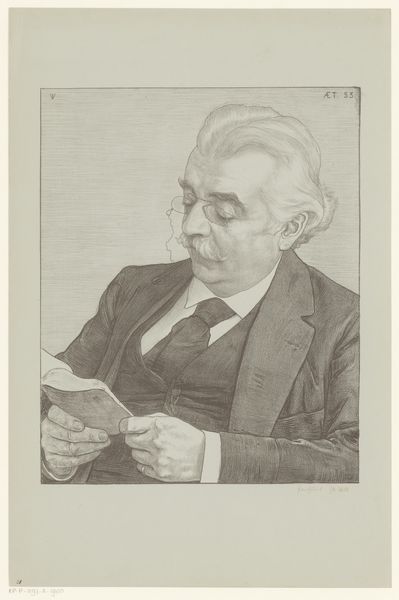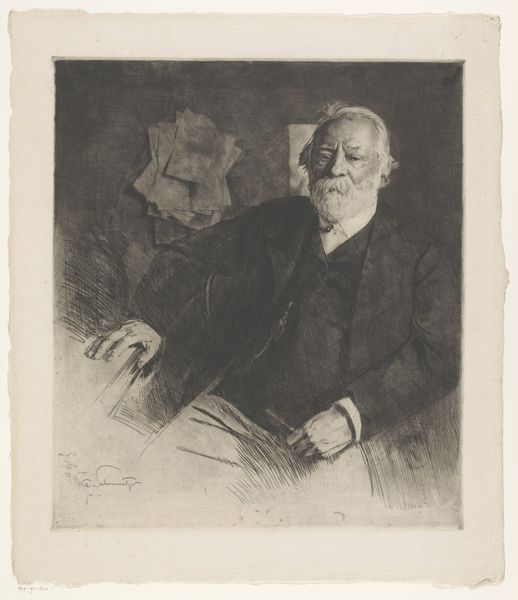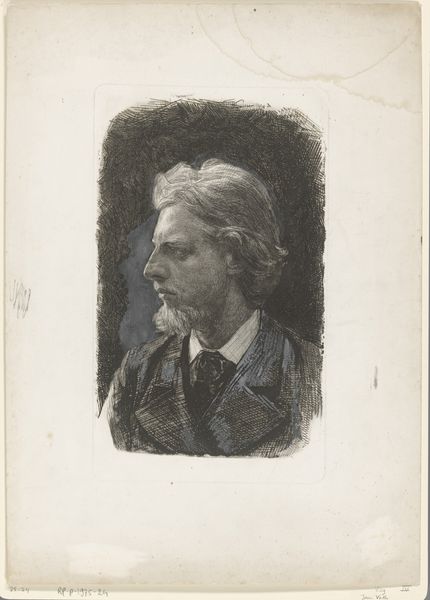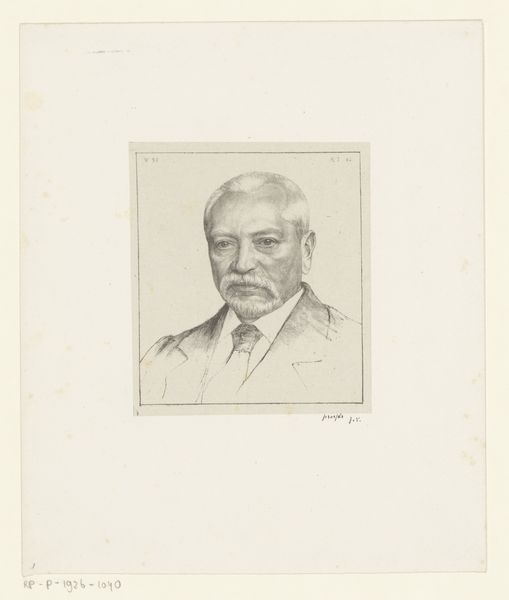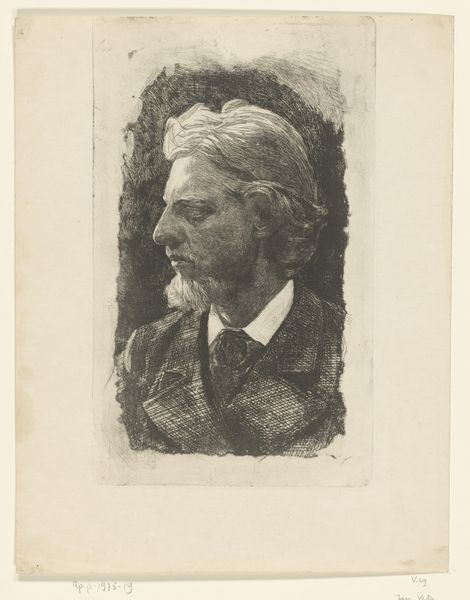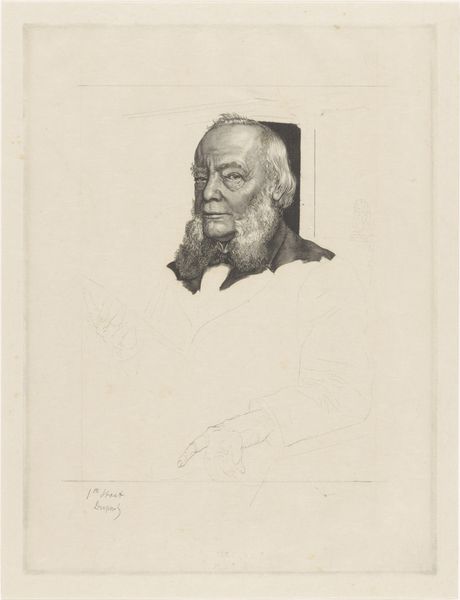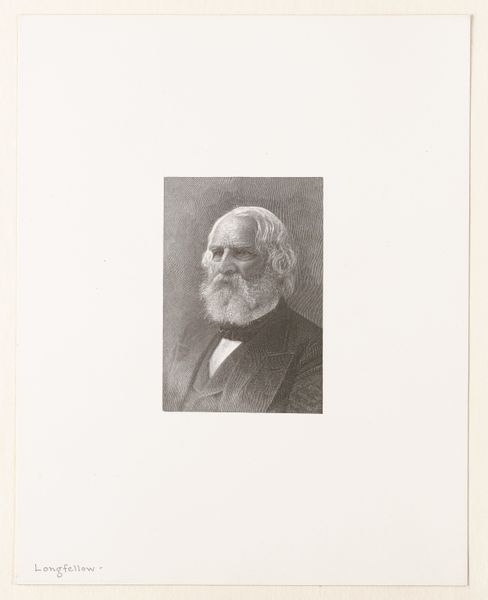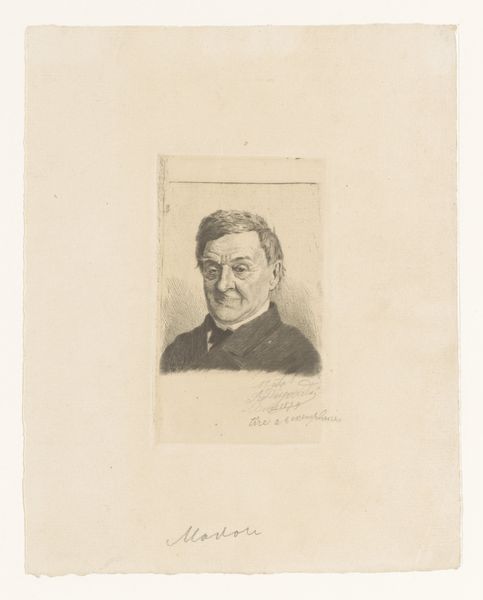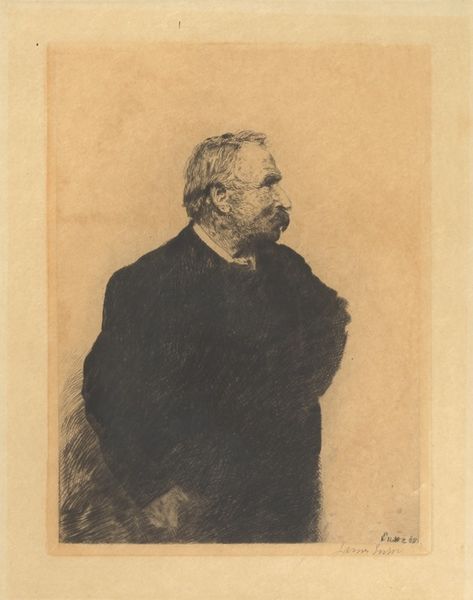
drawing, paper, ink, graphite
#
portrait
#
drawing
#
paper
#
ink
#
graphite
#
pencil work
#
realism
Dimensions: height 122 mm, width 118 mm
Copyright: Rijks Museum: Open Domain
Editor: This is Bernard Willem Wierink’s 1918 portrait of August Allebé, rendered in graphite and ink on paper. There's a thoughtful, almost troubled mood that I get from his expression. What strikes you when you look at this piece? Curator: I'm immediately drawn to the date, 1918. Contextually, the end of World War I significantly impacted social structures, including the art world. Considering Allebé was a figure deeply embedded in the academic art establishment, does this portrait perhaps signal a shift in his perception, or even a critique of the traditional power structures that had led to such devastation? His posture – hand to his face – speaks volumes. Editor: That's an interesting idea! I was focused on the artistic technique, the detailed rendering of his face. I hadn't really considered the historical context enough. Curator: Think about realism itself. Who gets represented, and how? A portrait of a prominent figure like Allebé, at this particular historical juncture, invites questions about representation, power, and even complicity. Is Wierink celebrating him or questioning his role within a changing society? And what is the symbolism of portraying him in pencil and ink? Is that suggesting art world conventions are loosening, and if so why? Editor: I see your point. Maybe the seeming simplicity of the portrait actually masks deeper issues of power and responsibility during that time? Curator: Precisely. Even the choice of materials and the very act of portraiture can become a political statement, when viewed through the lens of history and social change. Considering it as more than just a 'portrait' makes it more poignant. Editor: Thanks, I will definitely look at portraits differently going forward. The date really changes everything, as you mentioned! Curator: Indeed, it adds layers of meaning, transforming it from a simple depiction into a complex reflection of a tumultuous era.
Comments
No comments
Be the first to comment and join the conversation on the ultimate creative platform.
